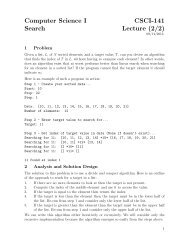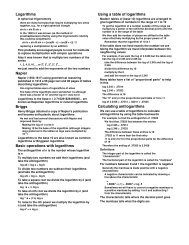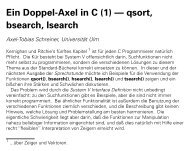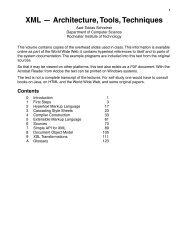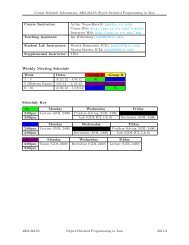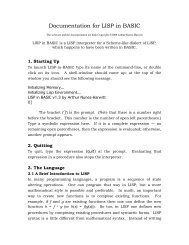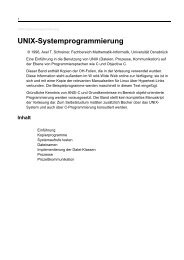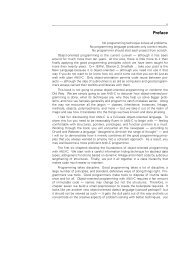SAT Based Attacks on SipHash - Department of Computer Science
SAT Based Attacks on SipHash - Department of Computer Science
SAT Based Attacks on SipHash - Department of Computer Science
You also want an ePaper? Increase the reach of your titles
YUMPU automatically turns print PDFs into web optimized ePapers that Google loves.
2<br />
infeasible to compute the original message.<br />
1.1.1 <strong>SipHash</strong><br />
Many Internet based services have a server that processes requests for several clients. Requests<br />
sent to such a server can be intercepted, modified and retransmitted to the server.<br />
This can be prevented by using MACs. MACs use a secret key to find the tag <strong>of</strong> the request<br />
which is then sent from the client to the server al<strong>on</strong>g with the request. The server recomputes<br />
the tag <strong>of</strong> the message and if it matches, processes the request. To process several<br />
such requests, the MAC needs to be fast and secure.<br />
<strong>SipHash</strong> is a pseudorandom functi<strong>on</strong> that is used to hash c<strong>on</strong>tents <strong>of</strong> packets sent over the<br />
Internet. It achieves this by using a secret key to find the tag <strong>of</strong> the message sent over the<br />
Internet which is then used to authenticate the sender. It can be shown as<br />
f (k, m) = t,<br />
f −→ MAC algorithm<br />
k −→ secret key<br />
m −→ message <strong>of</strong> arbitrary length<br />
t −→ tag <strong>of</strong> the message.<br />
<strong>SipHash</strong> uses a 128-bit key to hash varying bytes <strong>of</strong> data. It uses a series <strong>of</strong> XORs, additi<strong>on</strong>s<br />
and rotati<strong>on</strong> functi<strong>on</strong>s to produce the 64-bit final tag.<br />
A versi<strong>on</strong> <strong>of</strong> <strong>SipHash</strong>-c-d c<strong>on</strong>tains c compressi<strong>on</strong> rounds and d finalizati<strong>on</strong> rounds. A<br />
general flow <strong>of</strong> <strong>SipHash</strong> is shown in Figure 1.1.<br />
It uses 4 initializati<strong>on</strong> vectors v 0 through v 3 , each 64 bits l<strong>on</strong>g. They are created by XORing<br />
the lower and higher order 64 bits <strong>of</strong> the key with pre-chosen c<strong>on</strong>stants. Vectors v 0<br />
and v 2 are XOR-ed with the lower 64 bits <strong>of</strong> the key. Vectors v 1 and v 3 are XOR-ed with<br />
the higher 64 bits <strong>of</strong> the key. It then breaks down the given input into blocks <strong>of</strong> 8 bytes,<br />
padding extra bytes in case the input is not a multiple <strong>of</strong> 8. The last byte in the last block



